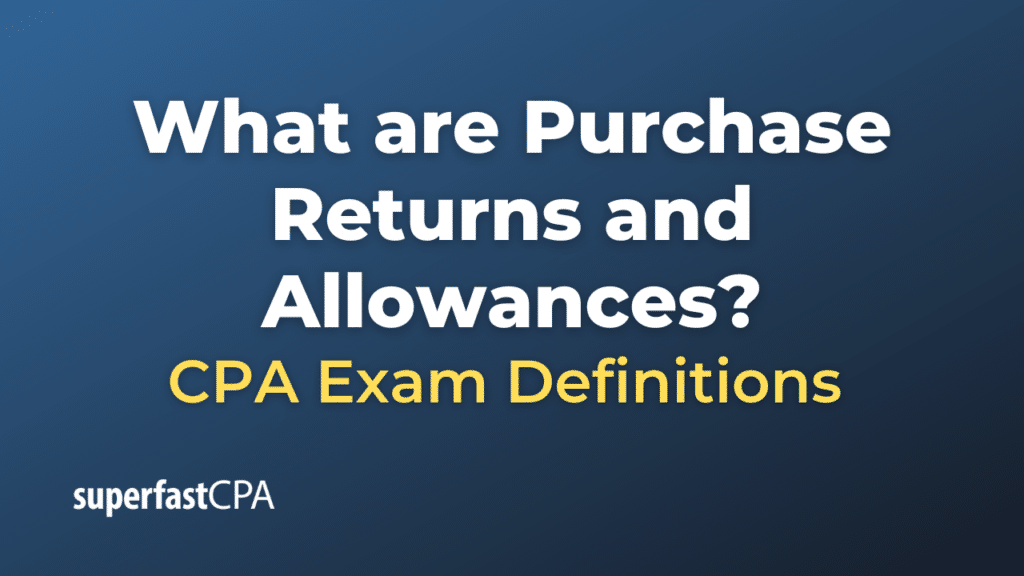Purchase Returns and Allowances
“Purchase Returns and Allowances” is a term used in accounting that refers to two types of transactions between a buyer and a seller:
- Purchase Returns: As I mentioned earlier, purchase returns occur when a buyer returns goods to a seller. The reasons for this can be varied: the goods could be damaged, they might not be what the buyer ordered, or they might not meet the buyer’s quality standards.
- Purchase Allowances: This refers to a situation where the buyer keeps the goods but the seller reduces the amount that the buyer owes, often because there’s a minor problem with the goods. For example, if a buyer receives a shipment of shirts and some of them have minor defects, the seller might give the buyer an allowance (i.e., a reduction in the price) rather than going to the trouble and expense of having the shirts returned.
In both cases, these transactions reduce the amount that the buyer owes to the seller. In accounting terms, they are usually recorded as a reduction in the buyer’s Inventory account and Accounts Payable account, assuming that the original purchase was made on credit.
Purchase returns and allowances are an important aspect of business as they can significantly affect profitability and cash flow. They can also provide valuable feedback to sellers about problems with their goods or shipping processes, allowing them to make improvements and reduce future returns and allowances.
Example of Purchase Returns and Allowances
Let’s consider a scenario involving a restaurant named “Bistro Delights”:
Purchase Return:
Bistro Delights receives a shipment of 50 bottles of a particular type of wine from their supplier. After tasting a bottle from the batch, the restaurant’s sommelier notices that the wine doesn’t taste as expected and seems to be of poor quality. Bistro Delights decides to return the entire batch to the supplier.
The total cost of the 50 bottles was $1,500. Upon the supplier’s approval of the return, Bistro Delights reduces its inventory by $1,500 and also reduces its accounts payable by $1,500. This is a purchase return.
Purchase Allowance:
In the same order, Bistro Delights had ordered 20 specialty cheese wheels at $30 each. However, upon receipt, they notice that the cheese wheels are slightly smaller than usual. The restaurant decides to keep the cheese but requests a reduction in price due to the smaller size.
The supplier agrees and provides an allowance of $5 per cheese wheel, resulting in a total allowance of $5 x 20 = $100. Bistro Delights records this as a decrease (debit) in accounts payable and a corresponding decrease (credit) in inventory value.
So, in both cases, Bistro Delights adjusted its payables and inventory based on the quality and value of goods received. Both the purchase return and allowance provide an opportunity for the supplier to receive feedback and adjust their quality control processes if necessary.













